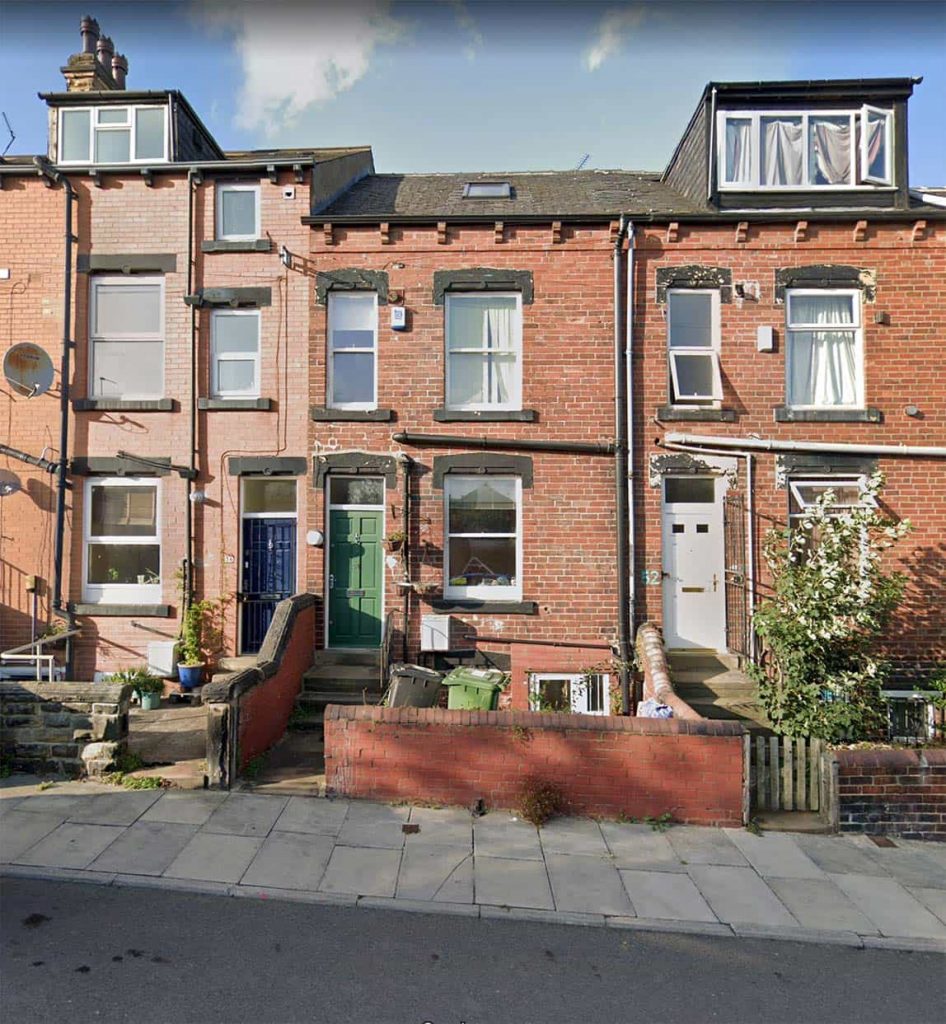My previous university residence was a 10-person house in Sheffield’s student area. We had a subterranean kitchen with no windows, one fridge and one (temperamental) hob. The walls and floor of the living space were so skewed that whenever you entered the room you had to leave immediately as you felt both drunk and seasick. Each room, some with no windows, consisted of a bed, wardrobe and maybe a desk, and there was no space left except for each room to have their own invasive community of Silverfish bugs – a pest which loves warm, dark and damp spaces. In winter, I slept in a sleeping bag with a hot water bottle, underneath a duvet and blanket, just to keep warm – my head, the only uncovered part of my body, was still shivering when I woke up in the morning. We paid around £300 each a month. That’s a total accumulation of £3’000 a month – £36’000 a year. £36’000 for a property which was cramped, cold and costly.
Yet somehow, overpriced and subpar living conditions have become the norm for students across the country. Student landlords have taken advantage of the growing student population who are leaving home and looking for accommodation, and the profits they earn come at the expense of economic inclusion in universities.
This piece aims to briefly dissect why student housing is so expensive, the issues this poses, as well as the general living issues with student housing and possible routes to address students’ needs. Notably, this is not an attack on all landlords, as I know many who have gone above and beyond for their tenants, however, there are many who are not so hospitable.
Why is student housing so expensive?
The amount of individuals opting to go to university has increased year on year for the last decade (Adams 2022). These are all budding students who will require a place to eat, sleep and study.
Naturally, demand for student housing has increased over the same time frame. When students move out of their homes to study in another city, their housing usually takes one of two forms:
- Purpose-built student accommodation (PBSA) – this is accommodation built specifically for students by private developers, varying in cost and quality, or;
- houses of multiple occupancies (HMO) – your average ‘student house’, in which unrelated individuals rent a room but share facilities and living space.
In order to afford this housing, students typically apply for a maintenance loan or grant (the amount and availability of which, depends on their socio-economic circumstances), they borrow from ‘The Bank of Mum and Dad’ (BOMAD), or end up taking a part-time job alongside their studies. This ultimately results in students having greater funds and purchasing power than would usually be expected of someone their age, and student rental companies are keen to extract the largest chunk of this wealth as they can. In response to this growing and paying demographic, there has been massive investment into student housing from aspiring entrepreneurs, local landlords and international investors, all seeking to earn grossly large profits by using students as cash cows.
It is important to note that the rise in the cost of student accommodation has outpaced the growth of loans (Britten 2020), and as such, students face a real-term increase in the portion of their funds going on accommodation. Unfortunately, when, or if, the government decides to increase the number of funds available to students, you can bet that rental companies will respond with business as usual by continuing to extract more and more of these available funds.
Problems with student housing:
Expensive
Brown (2021) cites that in the academic year 2020/21, half of all students did not see their property as good value for money. Accommodation costs now take up around three-quarters of the maximum loan allowance (Educate Magazine 2022), leaving little left over for other costs such as food, utilities and transport. Moreover, in many cases, the lower maintenance loans do not even cover rental costs, and it is expected that recipients will have alternative means of funding to make up for these external costs. This is not always guaranteed.
The unfairly high cost of student living is most obviously illustrated in PBSA, in which there is a ‘premium’ for the university experience and for meeting other students that would otherwise be out-of-reach in HMO, as well as the buildings typically being constructed more recently in response to increased demand (Osborne 2021). PBSA rental costs have risen a massive 61% in the last 10 years (Higgins 2021), compared with around 20% for the rest of privately rented accommodation in the UK (Statista 2022). In other words, the rate of increase in student rental costs is far outpacing the UK average.
Whilst certain groups such as CIA Landlords (2022) have published studies to help them locate the most profitable cities to extract student rent from (London, if you’re wondering), National Union of StudentsVice-President Hillary Gyebi-Ababio acknowledges the ‘student cost of living crisis’, exclaiming that “we are past the point where students are even close to affording this” (Shaw 2022). Although this is unfair for all students, most alarmingly, it prices out and deters those who are less financially well off from applying for, and attending, university. Moreover, students from less wealthy backgrounds who have to apply for a higher maintenance loan to pay for this accommodation will end up paying interest on this loan that those who borrow from the BOMAD do not have to do. To rephrase it, those from poorer backgrounds will pay more over time for this increasing cost than those from wealthier backgrounds.
Poor quality
With this high cost you would expect top-quality digs, however, 50% of students have reported damp conditions (Rickets 2021), 30% of no heating or hot water (Murray 2022) and much of student accommodations have been unfinished on arrival, with students only being told the night before and offered fruit baskets as an apology (Busby 2019). This trend of unfinished accommodation on arrival is, worryingly, increasing (Study International Staff 2019).
It is concerning that the general assumption of students is that it’s okay for them to put up with dodgy appliances, poor living conditions and being ripped off. That was wrong when student housing was cheaper than other forms of tenure, however, with spiralling costs of living, it is, even more, the case. The rights of private renters in the UK are bad enough anyway, yet students are often treated like second-class citizens when it comes to rental rights. Only earlier this month, students in St Andrews were unlawfully temporarily evicted from their accommodation so that landlords could make money from tourists wanting to stay for The Open golf tournament (Allan 2022).
Solutions
The solutions to this problem are multiple and not straightforward, however, I will attempt to illustrate some steps that could be taken in order to ease the pressure on student renters.
- More accountability from universities: Universities make huge profits from the fees that students provide them, however, students feel that not enough money is being invested into the infrastructure necessary to support them (Study International 2019). Universities should form better relationships with providers, ensuring that their shared customer base is being adequately looked after. Another possibility would be for universities to provide more affordable accommodation for students themselves.
- More accountability from the government: When taxpayers’ money is being used to fund students’ living costs, and housing providers are taking increasingly larger shares of this, it is surprising that the UK government is refusing to take a stronger stance on the matter. They could increase students’ rights, or introduce rent caps, just as they do with tuition fees (Galbraith 2020). All the whilst that the profitability of student housing is rising, it deters developers from building less profitable products, such as affordable housing – and that should concern all of us.
- Build more accommodation(?): The trouble with this, as illustrated previously, is that private student accommodation providers often have no agreement of any kind with the university (Galbraith 2020), and thus issues with quality and late production will still not be inherently addressed. Moreover, there is no guarantee that an increase in supply will decrease the cost of accommodation – the need for private developers to reproduce forms of housing which are profitable cuts out the innovation required to produce housing which is affordable (Britten 2020).
Conclusion
Student housing is expensive and is continuing to get more expensive. The rate of increase in private rental payments for the growing student demographic has far outpaced the UK average, as well as the growth of the student loan. Unfortunately, this large increase deters those from less wealthy backgrounds from being able to afford higher education. Once again, it is those who are less wealthy who are at the detriment of economic gain for a minority. Moreover, not only is the housing expensive, but it is often of poor quality, and students have limited rights, whilst often being treated as second-class renters.
The outlook is unclear, and collaboration between universities, government, student unions and private developers needs to be constant if the needs of all stakeholders are to be fairly met. The British Government which supports students through taxpayers’ money, must start taking a stronger stance with universities and providers to ensure that students are being looked after. Meanwhile, universities, which are earning huge profits from students’ fees each year, have a role in guaranteeing that their client base is not only being treated fairly but is also representative of the wider UK population as a whole


